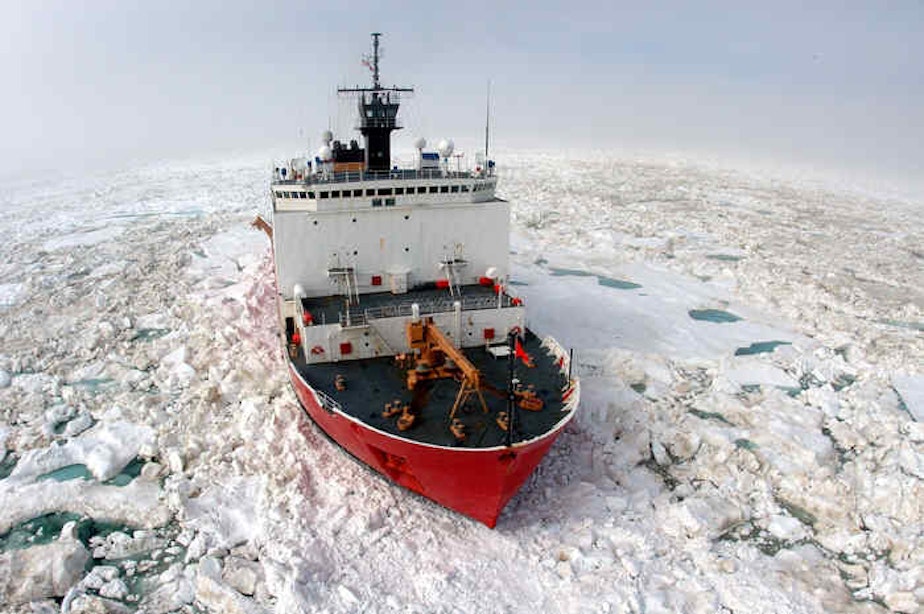Icebreaker Returns Home After Epic North Pole Journey

An American icebreaker has returned home to Seattle after a historic mission to the North Pole.
The U.S. Coast Guard cutter Healy broke its first ice floe in August, just north of Alaska.
For an entire month, the cutter navigated through open water and thick ice.
Then, the day before it reached the North Pole, the ice closed in and the sun traced a perfect circle around the horizon.
Capt. Jason Hamilton remembers exactly what he said, the moment the vessel arrived at the spot: "Ahoy, shipmates! It is 07:47 on the fifth of September. Coast Guard cutter Healy has reached 90 degrees north, which makes us the first United States vessel to reach the North Pole unaccompanied."
Sponsored
Cmdr. Bill Woityra was on deck at the time. He remembers a cheer going up.
"It almost got quiet," Woityra said. "There was that weird sense of being a part of history."
Before now, icebreakers have always gone north in pairs – two hulls to break the ice and two crews in case of trouble.
But in June, the Healy and its 95 crew members left Seattle alone.
The summer ice has gotten easier to navigate in the 10 years since the U.S. last went to the Pole.
Sponsored
America's entire icebreaking fleet has Seattle as home port. The heavy icebreakers, Polar Sea and Polar Star, can break through thick winter ice. (The Polar Sea has been out of commission, due to engine failure, since 2010.) The Healy is a medium-class icebreaker, with the capability to break 4.5 feet of ice at continuous speed, and to break eight feet at a time while "backing and ramming."
The Healy's hull is seven times thicker than that of a normal ship. It weighs 16,000 tons. And it has something called an “ice knife” at its bow. "You take this very heavy ship with a lot of power and it pushes into the ice, and you can think of the ice knife kind of in a shovel manner, just pushes through,” Hamilton said.
The Healy’s mission was to transport 50 scientists to the North Pole to help them collect air, water and sediment samples in the challenging arctic icescape.
Although Healy was alone on its path, the crew had friends in the Arctic. There was also a Canadian research vessel, the Amundsen, and a German icebreaker, Polarstern.
The teams left around the same time. Along the way, they collected samples to test the physical, biological and chemical composition of the Arctic.
Sponsored
They hadn’t planned to run into each other, but then at the North Pole, they did.
"Kind of unexpected," Hamilton said. "You're truly at the end of the earth, not expecting to see anybody, and then over the horizon here comes a big blue ship filled with other sailors and other scientists that are there for the exact same reason you are."
The German ship Polarstern parked next to the Healy. Both teams climbed off their ships for a few hours of liberty.
Woityra said it was especially meaningful for the scientists, many of whom had worked closely for years.
“In some cases, the North Pole was the first time that they met each other in person," he said.
Sponsored
The Healy headed south on Sept. 7. Capt. Hamilton says he’s proud of what they accomplished.
“Scientists want to get as much information as they can," he said. "My job is to ensure that we step in and make sure it's done safely. And we did that.”
The Healy is docked at the Coast Guard base in Seattle, near Safeco Field.
Over coming weeks, thousands of scientific samples will be unloaded and shipped to laboratories across the U.S.
The data will develop a scientific snapshot so future generations know what the Arctic Ocean looked like way back in the summer of 2015.
